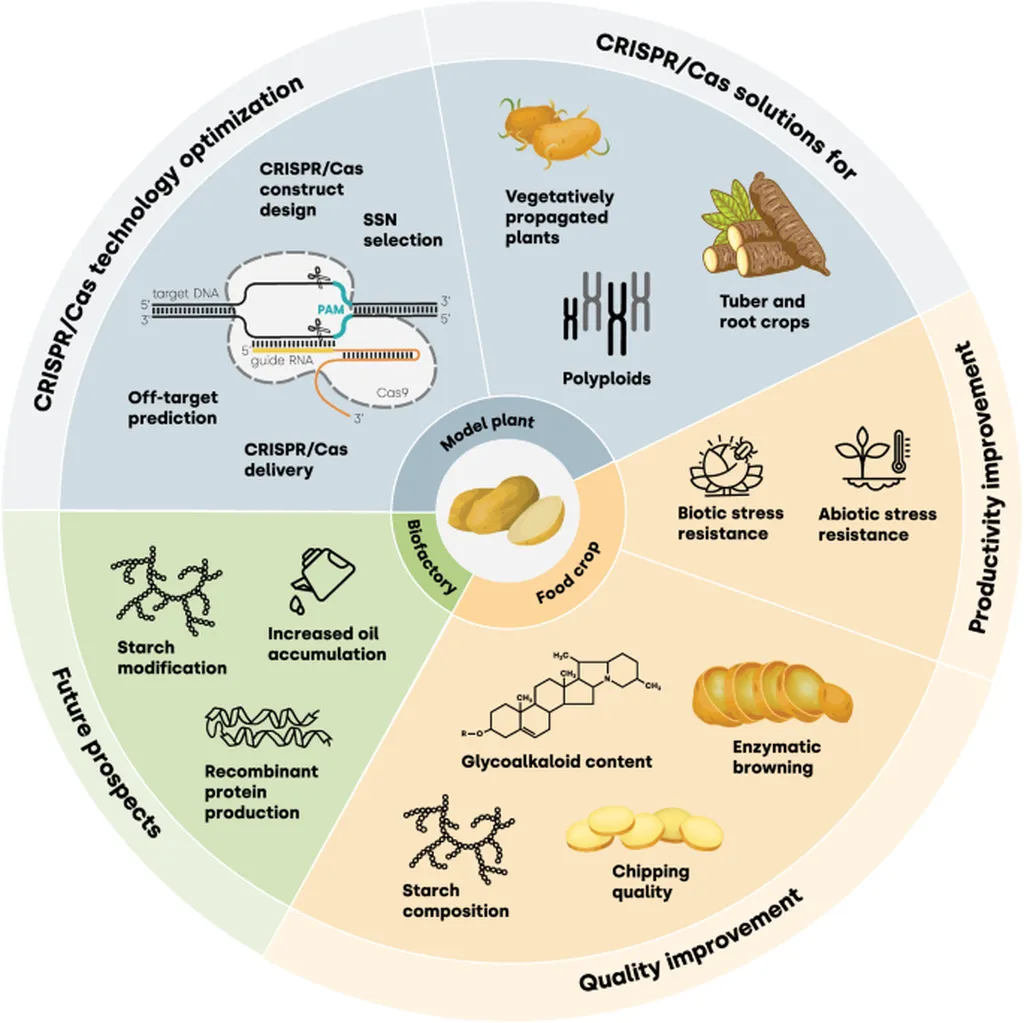In the world of potato breeding, a humble tuber is at the heart of a scientific breakthrough that could reshape how we understand and manipulate plant genetics. Researchers, led by Jing Xu from the College of Agronomy at Qingdao Agricultural University, have identified stable reference genes for normalizing mitochondrial gene expression in potato tissues and during anther development. This discovery, published in the journal *BMC Plant Biology*, is a significant step forward in the quest to develop cytoplasmic male sterility (CMS) as a breeding tool, potentially revolutionizing the agricultural sector.
The study focuses on the critical challenge of quantifying gene expression levels, a task that is foundational for validating gene function. “Quantifying the expression of candidate CMS genes is a critical aspect needed for the validation of gene expression levels for all organisms,” Xu explains. The team assessed eighteen candidate internal control genes, including both nuclear and mitochondrial genes, to find the most stable references for gene expression studies.
The findings reveal that the genes *nad1* and *nad2* were the most consistently expressed across different tissues and developmental stages, outperforming conventional nuclear reference genes. “The results indicate that *nad1* and *nad2* respectively were the most stably expressed marker genes in 8 different tissues and stages of anther development,” Xu notes. This stability is crucial for accurate gene expression analysis, particularly in the context of CMS, which is a key tool in plant breeding.
The implications of this research extend beyond the potato field. The identification of stable reference genes for mitochondrial gene expression can be a valuable tool for other Solanaceae species, including tomatoes, peppers, and eggplants. This could lead to more efficient breeding programs and the development of new varieties with desirable traits, such as disease resistance and improved yield.
For the energy sector, the potential impact is equally significant. Potatoes and other Solanaceae species are not just staple crops; they are also potential sources of bioenergy. By improving breeding techniques and understanding gene expression patterns, researchers can develop crops that are more efficient at converting sunlight into energy-rich compounds. This could lead to the production of more sustainable and cost-effective biofuels, reducing our reliance on fossil fuels.
The study’s findings provide a robust foundation for future research on mitochondrial gene expression in potatoes and other crops. As Xu and her team continue to explore the complexities of plant genetics, their work could pave the way for innovative solutions in agriculture and energy production. The journey towards sustainable and efficient crop breeding is ongoing, but with each discovery, we move closer to a future where science and technology work hand in hand to feed and fuel the world.
In the realm of plant science, this research is a testament to the power of meticulous investigation and the potential for groundbreaking discoveries. As we delve deeper into the genetic intricacies of our crops, we unlock new possibilities for a more sustainable and prosperous future.

